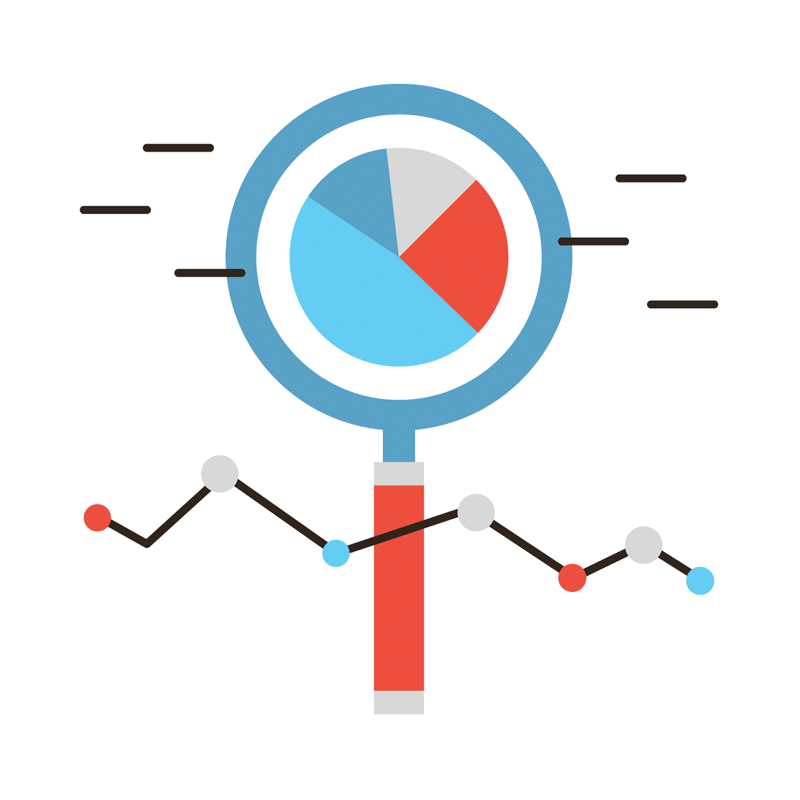
You probably already know what an important role SEO plays in your digital marketing strategy. It’s how you get found through search engines by people who want to buy your products, without paying for the traffic. But what happens if you realize your existing site and content isn’t up to date on SEO best practices? Maybe you set it up before you were a search engine whiz, or before your goal was to boost organic traffic. That’s when you need to do an SEO audit of your site.
What’s an SEO Audit?
An SEO audit is a checklist of steps to improve your website’s health and visibility to search engines. It an important tool in your SEO Strategy. If you set up your site a while ago without adhering to SEO best practices, or you just want to check in to make sure your site is all tuned up, you need an SEO audit. And with the speed that SEO information changes, what was working well for your site two years may not be producing results for you today. Having a proper SEO setup on your site is just as important as other SEO elements like your backlink profile.
To start your SEO audit, you can begin by using an audit tool like SEMrush to crawl through your pages for any errors. This is a great option if you’re using a paid tool, as the site crawl will surface any problems like broken links that will bring your score down.
Performing an SEO Audit
But if you’re not yet using a paid tool? You’re not out of luck. There are a few steps you can do through Google’s own free tools to review your site structure and the pages on your site for any issues. Look at your submitted sitemaps in Google Search Console to be sure they’re submitted correctly – if not, Google won’t be able to easily navigate your site. You also want to check your Index Coverage Report in Google Search Console to be sure all your pages, new and old, are indexed. Any errors will come up in red so you’ll know exactly which page needs to be fixed.
Check Your Mobile Experience
Next, you want to be sure your site is mobile-friendly. Many, if not most, of your users will access your site at some point from their phones instead of a laptop or desktop. Does your page load correctly and look good when you access it from your phone? If not, that’s dragging down your site rankings. Google has recently said it is using mobile–friendliness as an important ranking factor, so you need to have this set up if it’s lacking for you.
How can you tell if you need to fix your mobile version? Google has a free tool for that. Just plug in your web address and get the data you need.
Broken links are a factor that will drag down your search engine ranking and damage your user experience too. And they pop up more frequently than you’d think – whether because of a typo, a deleted internal page, or a change to an external site. Run your site through one of the many free broken link checking pages and make sure those are deleted or cleaned up quickly.
Check Your Site Flow
Up next in your SEO audit? Making sure your site structure still makes sense. It’s common for growing sites to have little structure or a confusing one, because it might not have been a concern when you first set your site up. Make sure your categories still fit your content, and that all the content on your site is easily findable with less than three clicks.
A thoughtful site structure encourages visitors to spend more time on your page, which increases your SEO rankings. If you would like to move your site to a new domain, make sure to set up a 301 redirect so your traffic from your original site doesn’t get lost. You should also set up a 301 redirect for all the different URLs of your page (www vs. without, etc) so all your traffic directs to your https site.
Check Site Speed
Site speed is a very critical element of your SEO rankings. We all know the frustration of waiting for a needed web page to load – it’s not a good user experience. Google knows it too, and punishes long load times. What are the best resources to check your page speed insights? Don’t worry, Google has a tool for that too. It’s called Google Page Speed Insights and it’s free. It will tell you the loading time for both the desktop and mobile versions of your site.
Check SEO in Your Content
It’s not just your overall site that needs an SEO audit. The individual pages of content you’ve created need one as well. Each blog post and site page has to be optimized for SEO. And if you created your site a while ago, before you were an SEO master, there might be a lot of room for improvement. That can sound worrying but it’s great news – you’re just a few steps away from a big boost in your search rankings.
First, check your title tags. Are all of your page titles coded in your HTML with the proper title tag? This helps search engines figure out what your content on the page is about. You should use a form of the keyword you’re trying to rank for on that page. Keep the title to about 60 characters so it shows up in search results well.
Meta tags are another important tag system on your website. The meta HTML tag will provide search engines with a description of what your content contains. Meta descriptions are short paragraphs that tell searchers what your content is about. For best SEO results, each page should have a meta description that contains a keyword but also provides an engaging blurb that makes users want to read more.
You also need to check your on-page images for a few things. Review the file size – if it’s over 1 MB compress it, or it will slow your page. Also, check to make sure you have alt text written for each image. Alt text should describe what’s in each image, helping search engines understand what each image contains. Stuffing alt text with keywords that don’t quite match isn’t a good idea – just describe what each image contains.
And finally, don’t forget to boost your blog posts and articles on social media. The greater the number of people who access your content directly or from search, the more authority Google assumes your website has and so it will likely rank your site higher. Social media doesn’t just mean Facebook – don’t forget about LinkedIn for business-related content.
Your Next Steps
Your SEO audit is done – but your work isn’t finished yet. You still have two more steps to complete your audit.
Setting up a way to track your results is a great idea after an SEO audit. Chances are you won’t be able to update the SEO on each post and page at once, so note which ones you’re updating first and track their progress after the update. Are you seeing a boost in traffic, and more critically, in traffic that converts? This will give you insights for updating the rest of your pages in your next batch of updates.
Your final step is to set a regular schedule to perform an SEO audit. Once a year is a good minimum time. A lot can change with SEO best practices in just 12 months. You want to have a plan to stay on top of any changes so you don’t lose all the boosts you just got from completing your audit. It’s a good idea to check for items like broken links more frequently as these can happen quickly.
Then you’re done – for now! SEO audits are a lot of work, but they usually pay off with big results. If you’re tracking your results, you should see an uptick in a few weeks, with bigger results coming down the line. Always remember, when you invest in SEO, you’re playing the long game – not looking for instant results.
Need SEO Audit Help?
At ContentFirst.Marketing, we know how much effort and time goes into every aspect of SEO, from setting up a site properly from the start to auditing and making regular updates. And we’re experts in creating well-written content that engages your audience and gets you that SEO boost your business needs too.
It’s possible to go it alone – but you might spend all that time and effort with few results to be seen. Instead, give ContentFirst.Marketing a call and get your free business review. We’ll take care of as much of your SEO and content strategy as you need. And we’ll get you results you can understand and measure, with business that grows consistently.


